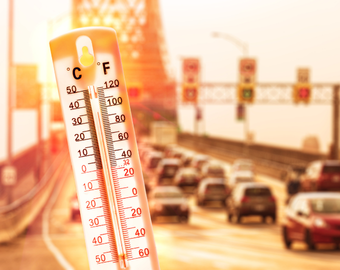Average speed cameras have become an increasingly common sight on UK roads, particularly on motorways, A-roads, and in areas with temporary roadworks. Unlike traditional speed cameras, which capture a vehicle’s speed at a single point, average speed cameras calculate how fast you’ve been travelling over a distance. Their aim is not to catch drivers out, but to encourage consistent, safe speeds—and the data shows they’re highly effective at doing just that.
These systems typically operate in pairs or as a network over longer stretches of road. When your vehicle passes the first camera, your number plate is recorded using Automatic Number Plate Recognition (ANPR) technology, along with a timestamp. A second camera, placed further along the road, captures the same details. By calculating the time it took your vehicle to travel between the two points, the system determines your average speed. If it exceeds the legal limit, a penalty notice is issued.
Average speed cameras don’t flash like traditional speed traps, and they work just as well at night thanks to infrared technology. They also don’t rely on lane position—switching lanes won’t prevent you from being tracked. These systems are designed to cover all lanes and continue recording uninterrupted.
While many drivers believe there’s a margin for error, and some police forces do apply a ‘10% + 2mph’ tolerance, this isn’t guaranteed. Technically, if you’re driving even slightly over the limit, you could receive a fine. Most commonly, this would be a £100 fixed penalty and three points on your licence. In some cases, drivers may be offered a speed awareness course instead, depending on the severity of the offence and the policies of the local police force.
One of the major benefits of average speed cameras is that they promote smooth driving, rather than sudden braking. Because drivers know they are being monitored over a stretch of road rather than at a single point, there is less temptation to slow down just before a camera and speed up again afterwards. This helps reduce collisions and improves traffic flow. In fact, government studies have shown a significant drop in serious accidents on roads where these cameras are used.
For motorists, the best approach is to stay consistently within the speed limit. Cruise control or a speed limiter can help, especially on long motorway stretches. It’s also important to keep an eye out for temporary limits—these often appear in roadworks or areas with specific safety concerns, and average speed cameras are frequently used in these zones.
It’s worth noting that average speed cameras are not there to punish responsible drivers—they’re a tool to make roads safer for everyone. By maintaining a steady speed and being aware of the limit, you’ll not only avoid fines but contribute to a safer and more predictable driving environment.
In summary, average speed cameras are a quiet but powerful part of the UK’s road safety network. With no flashes, no obvious warnings, and no shortcuts to avoid them, they do exactly what they’re meant to: encourage drivers to think ahead, stay steady, and drive within the law.




